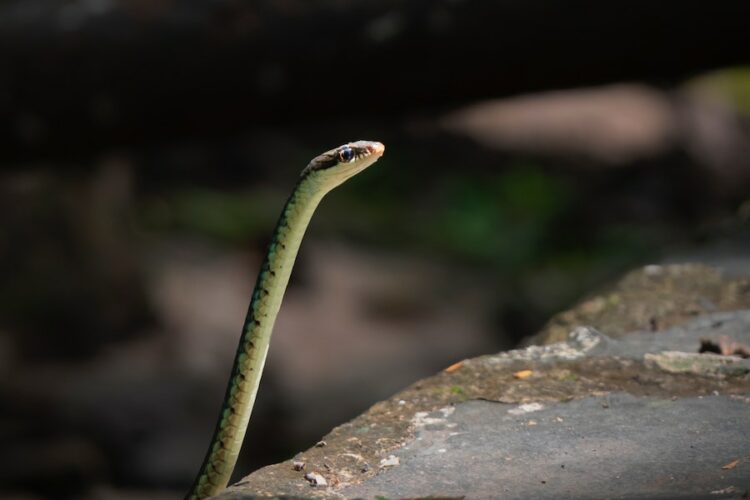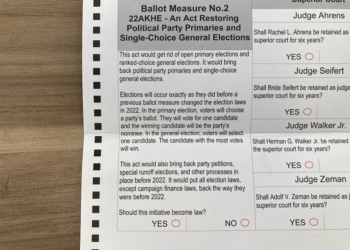Snake bite piercings, characterized by dual lower lip piercings, have become a striking trend in body modification. These piercings, inspired by the venomous fangs of a snake, are celebrated for their edgy aesthetic. However, beneath the allure lies a web of potential dangers that demand our attention. In this article, we delve into the intricacies of snake bite piercings, exploring the anatomy, risks, aftercare, and real-life experiences. It’s time to unmask the hidden perils and empower you to make informed decisions about this popular form of self-expression.
Why Are Snake Bite Piercings Dangerous?
- Infection: Any piercing creates an entry point for bacteria, which can lead to infections. The oral cavity, with its constant exposure to bacteria, is particularly susceptible. Infections can cause swelling, pain, and pus discharge.
- Allergic Reactions: The materials used in snake bite jewelry, such as nickel or certain metals, can trigger allergic reactions in some individuals. These reactions can range from mild irritation to severe skin problems.
- Swelling and Pain: Swelling is a common side effect of lip piercings, but excessive or prolonged swelling can lead to discomfort and complications like difficulty speaking, eating, or drinking.
- Damage to Teeth and Gums: The constant presence of jewelry in the mouth can result in friction against teeth and gums. Over time, this can lead to dental damage, including chipped teeth and gum recession.
- Migration and Rejection: Piercings can sometimes migrate (move) or be rejected by the body, causing jewelry to shift or become partially expelled. This can lead to scarring or the need for piercing removal.
- Speech and Oral Functionality: Snake bite piercings can temporarily affect speech and oral functionality. Some individuals may find it challenging to pronounce certain sounds or maintain good oral hygiene.
- Choking Hazard: Accidental ingestion or inhalation of small jewelry pieces is a potential choking hazard, especially if the jewelry becomes loose or detached.
- Difficulty with Oral Hygiene: Maintaining proper oral hygiene can be more challenging with lip piercings in place, increasing the risk of gum disease and tooth decay.
- Psychological Impacts: Some individuals may experience psychological distress due to physical pain, complications, or concerns about social acceptance associated with snake bite piercings.
- Incompatible with Certain Professions: Certain professions, such as healthcare or food service, may have strict regulations against visible piercings, which can limit career opportunities.
Understanding Snake Bite Piercings
Snake bite piercings are a popular and visually striking form of body modification that mimics the appearance of a snake’s fangs. These piercings consist of dual lower lip piercings, typically placed symmetrically to resemble the bite marks of a snake. This aesthetic choice has gained widespread popularity, particularly among younger generations and those seeking a unique and edgy style statement.
These piercings are deeply rooted in contemporary body modification culture, where self-expression takes on various forms. Snake bite piercings, along with other types of lip piercings, have evolved to become symbols of individuality, rebellion, and personal identity. They are a canvas for creativity, allowing individuals to adorn their faces with unique jewelry and express their personalities.
While snake bite piercings can be visually striking and emotionally empowering, they come with a set of potential risks and challenges. It is essential to understand their anatomy, the process of getting them done, and the potential complications and discomforts associated with these piercings. This understanding serves as a crucial foundation for making informed decisions about whether snake bite piercings are the right choice for you and how to navigate their challenges effectively.
Tips For Minimizing Risks During The Healing Process
Minimizing risks during the healing process of snake bite piercings is crucial for a successful and trouble-free experience. Here are some tips to help you reduce potential complications:
- Choose a Qualified Piercer: Start by selecting a professional and experienced piercer who follows strict hygiene and safety standards. Ensure the studio is clean, licensed, and reputable.
- Follow Aftercare Instructions: Your piercer will provide you with specific aftercare instructions. Follow these guidelines diligently, which may include cleaning the piercings with saline solution, avoiding oral contact with unwashed hands, and refraining from playing with the jewelry.
- Oral Hygiene: Maintain excellent oral hygiene during the healing process. Brush your teeth gently with a soft-bristle toothbrush and use an alcohol-free, antimicrobial mouthwash after meals. Avoid alcohol-based mouthwash, as it can be too harsh.
- Rinse After Eating and Drinking: After eating or drinking anything other than water, rinse your mouth with a saline solution or a non-alcoholic, alcohol-free mouthwash to remove food particles and reduce the risk of infection.
- Watch for Signs of Infection: Be vigilant for signs of infection, such as excessive redness, swelling, pain, or the discharge of yellow or green pus. If you suspect an infection, seek prompt medical attention.
- Avoid Touching or Twisting the Jewelry: Do not touch or twist the jewelry unnecessarily. This can introduce bacteria and disrupt the healing process. Only handle the jewelry with clean hands when necessary.
- Limit Oral Contact: During the healing period, minimize oral contact with foreign objects, including pens, straws, and your own fingers. Avoid kissing or engaging in oral activities to prevent contamination and irritation.
- Be Cautious with Food: Be mindful of what you eat to avoid getting food particles caught in the jewelry. Avoid hard, crunchy, or spicy foods that can irritate the piercings.
- Stay Hydrated: Drink plenty of water to keep your body well-hydrated. Proper hydration can promote healing and reduce the risk of complications.
- Protect Against Trauma: Be cautious when engaging in activities that may expose the piercings to trauma, such as contact sports. Consider using a soft retainer or removing the jewelry temporarily during such activities.
Alternatives To Snake Bite Piercings
While snake bite piercings can be visually striking, they come with potential risks and may not be suitable for everyone. Fortunately, there are alternative ways to achieve a similar aesthetic or express individuality without undergoing piercings. Here are some alternatives:
- Magnetic Jewelry: Magnetic lip or labret jewelry can mimic the appearance of piercings without the need for actual piercings. These pieces adhere to the skin with magnets, offering a temporary and painless way to experiment with the look.
- Fake Lip Rings: Fake lip rings or cuffs are non-piercing jewelry pieces that can be worn on the lower lip to create the illusion of piercings. They come in various designs, styles, and materials, allowing you to change your look easily.
- Temporary Tattoos: Temporary lip tattoos or lip decals can be applied to the skin to achieve unique designs or patterns temporarily. These can be a fun and creative way to experiment with lip art without the commitment of piercings.
- Body Paint and Makeup: Body paint and makeup can be used to create the appearance of piercings or other body modifications. You can experiment with different colors, designs, and styles to achieve the desired look.
- Clip-On Lip Rings: Clip-on lip rings are jewelry pieces that can be attached to the lip’s edge without the need for piercings. They are easy to put on and remove, making them a convenient option for occasional use.
- Lip Jewelry Adhesives: Some adhesive products are designed to attach small decorative elements to the lips temporarily. These can be used to add a touch of sparkle or unique designs without undergoing a piercing procedure.
- Lip Stickers and Decals: Lip stickers and decals come in various shapes and designs, allowing you to create unique patterns and styles on your lips for special occasions or events.
- Lip Piercing Simulators: There are apps and online tools that allow you to upload a photo of yourself and virtually add lip piercings to see how they look without committing to the real thing.
- Lip Makeup: Experiment with bold lip colors, lip liners, and lip glosses to draw attention to your lips and create unique looks without any permanent alterations.
Conclusion
In conclusion, while snake bite piercings may hold undeniable allure as a form of self-expression, it is vital to recognize the potential dangers they present. From the risk of infection and allergic reactions to dental issues and discomfort, these piercings demand careful consideration. By choosing reputable piercers, adhering to proper aftercare, and remaining vigilant, enthusiasts can reduce risks. Alternatives also offer creative ways to achieve a similar look without the commitment. Ultimately, responsible decision-making is essential when it comes to body modifications, ensuring that individuality and aesthetic expression do not compromise one’s health and well-being.
FAQ’s
How Long Does It Take For Snake Bite Piercings To Heal?
Healing times vary but typically range from 6 to 8 weeks. Full healing may take several months.
Can I Change The Jewelry In My Snake Bite Piercings During The Healing Process?
It’s best to wait until the piercings are fully healed before changing jewelry to avoid complications.
What’s The Risk Of Infection With Snake Bite Piercings?
Infections are possible, especially if aftercare isn’t followed. It’s essential to maintain good hygiene and monitor for signs of infection.
Does Snake Bite Piercings Hurt During The Piercing Process?
Pain levels vary from person to person, but some discomfort is common during the procedure.
Are There Age Restrictions For Getting Snake Bite Piercings?
Age restrictions vary by location, but many studios require clients to be at least 16 to 18 years old and may require parental consent for minors.







